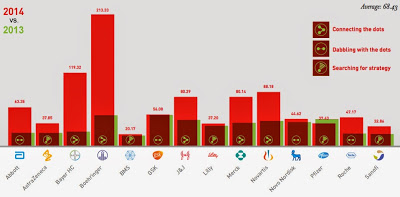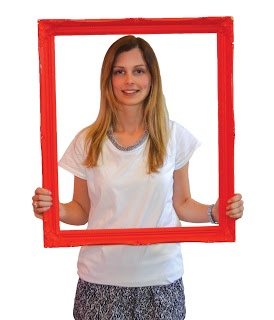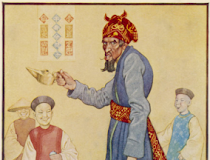“How can the pharma and healthcare industry thrill on social media?”
That’s a question Rebecca Canvin (@BeckyCanvin), Social Media Manager at Ogilvy Healthworld, attempted to answer in a guest column (here).
“Over the past few years the myth that pharma companies can’t use social media has been unravelled and conversations now focus on ‘how can pharma do social?’,” writes Becky. “This movement brings about unique challenges, but one thing is for certain – as more companies recognise the importance of social media it’s time for pharma to be brave and take their conversations to the next level.”
Becky recommends that pharma can do this by “getting the basics right” such as “having online conversations and engaging appropriately instead of just pushing out content on social networks” and “move fast when they receive comments online,” which, to me, seems very sensible advice to follow.
Becky cites at least two pharmaceutical companies that seem to be getting these basics right according to results of her company’s 2014 “Connecting the Dots” survey. Some pharma pundits, however, implied that Becky is a “young, inexperienced digital” person who “[spent] a lot of money without showing needed results.”
Continue reading to find out which pharma companies are getting it right and who dissed Becky!
One of the companies cited by Becky that has built trust and respect from their followers is Johnson & Johnson, which does this well by “engaging with consumers, healthcare professionals and media consistently on their networks in a way that encourages followers to contribute to the conversation.” Becky is basing this on results from her survey, which can be summarized in the following chart:
 |
| Click on the chart for an enlarged view. |
I won’t get into the details here of how Ogilvy Healthworld rated these companies use of social media. You can find out more about that by listening to my interview of Becky: “Connecting the Social Media Dots: Size Doesn’t Matter!” or by clicking on the playback widget at the end of this post.
“Another way that pharmaceutical businesses can participate in social media is to move fast when they receive comments online,” sad becky. “To do this effectively all stakeholders need to be prepared and scenarios need to be planned for like Boehringer Ingelheim, who responds to comments quickly and effectively.”
Meanwhile, Richard Myer at World of DTC Marketing.com says “Ogilivy Healthworld’s report on social media is shallow and flawed and ignores advanced metrics within digital marketing. While experience can indeed be a curse, young, inexperienced digital people can spend a lot of money without showing needed results.”
Wow! Pretty harsh. And here I was admiring Becky as a very likable, smart and attractive young person!
“Ogilvy Healthworld, like any big agency, is trying to build clients and what better way than to issue a report on social media within pharma that appeals to the ignorance of DTC marketers.”
Myer rightly points out a few specific limitations of the survey, among which are:
- it lacks an in depth analysis beyond the numbers, and
- a great number of people within the industry follow pharma companies/brands on social media, not patients.
Myer is a DTC person and has little patience for surveys that do not laser-focus on his interest: consumers and patients. Keep in mind that Ogilvy Healthworld looked only at the main corporate accounts — and excluding disease awareness/branded accounts — of the 14 largest pharma companies. So, yeah, these accounts may not be focused on reaching patients exclusively but are focused on reaching the media (which reaches patients), physicians (who interact with patients), and investors (what good are they for patients?). All these stakeholders are important to pharma and consumers/patients.
Yes, the report is another one of those number-crunching analyses that I have often criticized myself. What’s needed is more analysis of the content of pharma’s social media efforts. Looking at Twitter, for example, numbers alone are often a poor barometer of how well pharma ENGAGES in conversation via social media. To demonstrate this, I compared tweets from @Pfizer_news (“The official site for Pfizer Inc., where we apply science and our global resources to improve health and well-being at every stage of life. I’m Jen Kokell, GMR”) and @SanofiUS (“The official Twitter feed for Sanofi US. Tweets on news, updates, and other info … Intended for U.S. audiences only”).
In my analysis — done back in August 2011 (Followers Trump Content. Pfizer vs. Sanofi Case Study) — Pfizer beat Sanofi hands down in the numbers game (e.g., followers). However, whereas 60% of Pfizer’s Tweets (12 out 20) were self-serving — “Pfizer did this…”, “Pfizer did that..” only 5% of Sanofi’s tweets were self-serving. If I met Pfizer_news at a cocktail party, I would find a plausible excuse to run away and talk to SanofiUS!
Meanwhile, listen to this Pharma Marketing Talk podcast to learn what Ogilvy Healthworld plans for next year’s survey to address Myer’s concerns:









![6 Digital Tools at the Center of Healthcare Digitalization [INFOGRAPHIC]](http://ec2-54-175-84-28.compute-1.amazonaws.com/pharma-mkting.com/wp-content/uploads/2021/04/6DigitalTools_600px-100x70.jpg)




